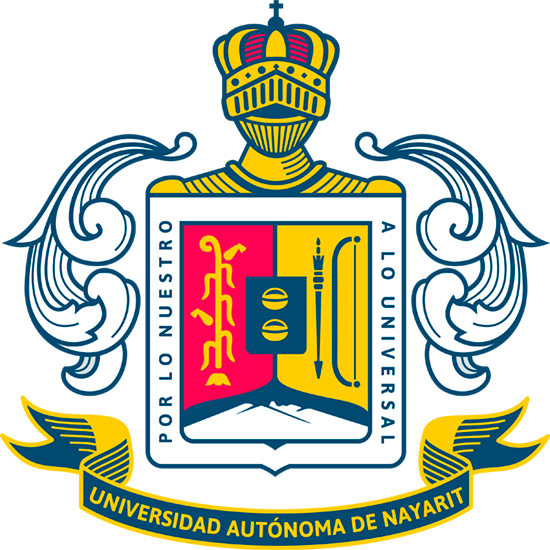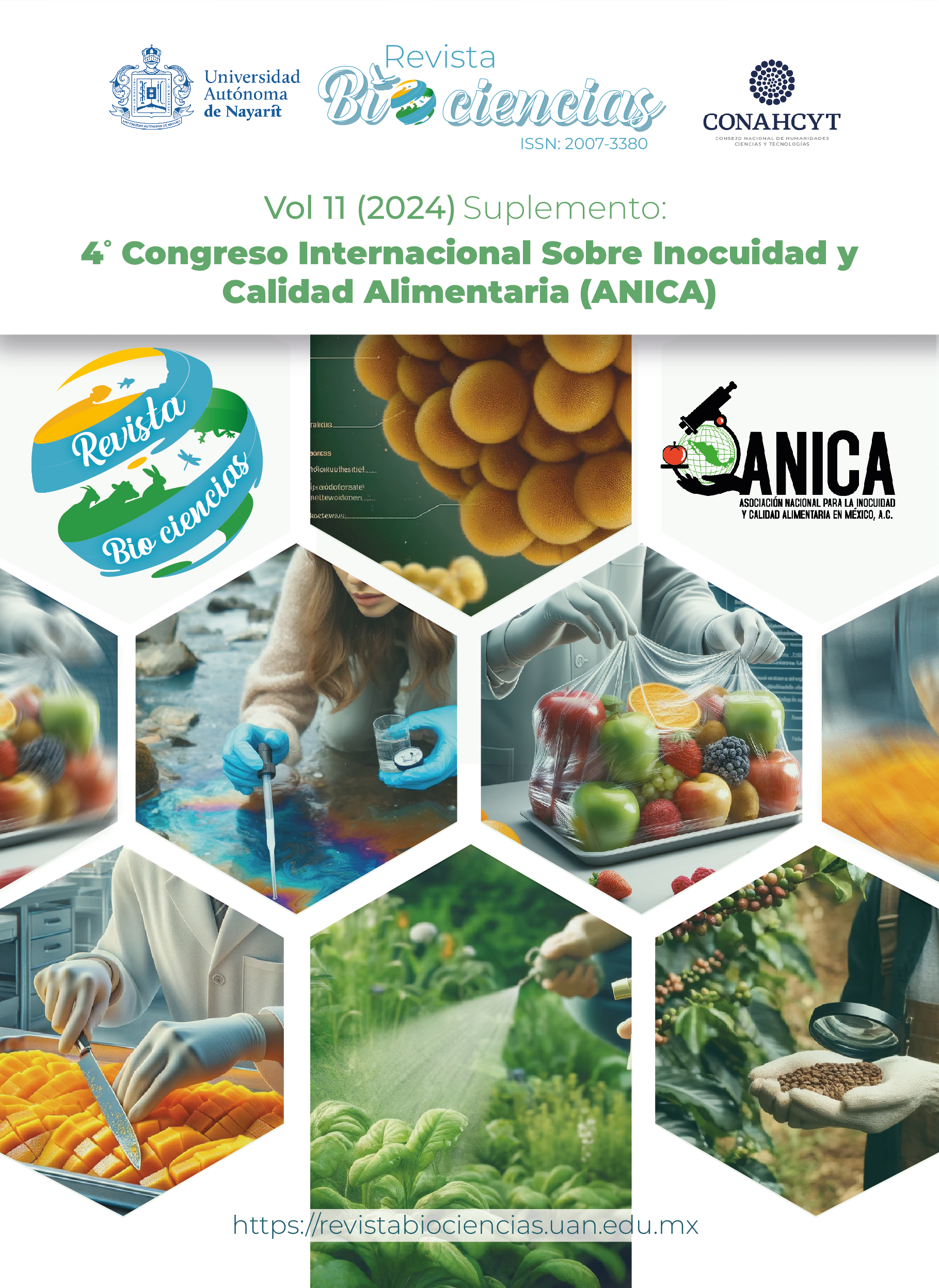Abstract
Parasitic infections are a public health issue in Mexico. It has recently been reported that native maize has antimicrobial properties. Microwave cooking reduces food preparation time without affecting its nutritional and sensory quality. Several authors have reported that solid-state fermentation (SSF) improves fermented grains' nutritional and nutraceutical properties. This work aimed to evaluate the effect of microwave cooking and SSF on phenolic compounds and antioxidant and antiparasitic properties of blue maize. Maize grains were cooked in a microwave and then fermented with Rhizopus oligosporus for 108 h. Free and bound extracts of raw, microwave-cooked, and fermented grains were obtained to evaluate their phenolic content antioxidant and antiparasitic potentials against Giardia duodenalis. SSF increased protein, total phenolic content, and antioxidant activity by 31 %, 28 %, and 19 %, respectively. About 70 % of parasitic inhibition was found at 50 mg/mL polyphenols for all three samples. Microwave cooking and fermentation of blue maize show beneficial potential for health, increasing its bioactive components and allowing the inhibition of the Giardia duodenalis parasite.
References
Abdel‐Aal, E.S., & Hucl, P. (1999). A rapid method for quantifying total anthocyanins in blue aleurone and purple pericarp wheats. Cereal Chemistry, 76(3), 350-354. https://doi.org/10.1094/CCHEM.1999.76.3.350
Anthony, J. P., Fyfe, L., Stewart, D., & McDougall, G. J. (2011). Differential effectiveness of berry polyphenols as anti-giardial agents. Parasitology, 138(9), 1110-1116. https://doi.org/10.1017/S0031182011000825
Aguayo-Rojas, J., Mora-Rochín, S., Cuevas-Rodríguez, E.O., Serna-Saldívar, S.O., Gutierrez-Uribe, J.A., Reyes-Moreno, C., & Milán-Carrillo, J. (2012). Phytochemicals and antioxidant capacity of tortillas obtained after lime-cooking extrusion process of whole pigmented Mexican maize. Plant Foods for Human Nutrition, 67(2), 178-185. https://link.springer.com/article/10.1007/s11130-012-0288-y
Ahnan‐Winarno, A. D., Cordeiro, L., Winarno, F. G., Gibbons, J., & Xiao, H. (2021). Tempeh: A semicentennial review on its health benefits, fermentation, safety, processing, sustainability, and affordability. Comprehensive Reviews in Food Science and Food Safety, 20(2), 1717-1767. https://doi.org/10.1111/1541-4337.12710
Alajaji, S. A., & El-Adawy, T. A. (2006). Nutritional composition of chickpea (Cicer arietinum L.) as affected by microwave cooking and other traditional cooking methods. Journal of Food Composition and Analysis, 19(8), 806–812. https://doi.org/10.1016/j.jfca.2006.03.015
Official Methods of Analysis [AOAC]. (2000). Official Methods of Analysis (16th Ed.). Washington, DC: Association of Official Analytical Chemists. pp .777-787.
Chen, C., Somavat, P., Singh, V., & de Mejia, E. G. (2017). Chemical characterization of proanthocyanidins in purple, blue, and red maize coproducts from different milling processes and their anti-inflammatory properties. Industrial Crops and Products, 109, 464-475. https://doi.org/10.1016/j.indcrop.2017.08.046
Delgado-Vargas, F., Gurrola-Bojórquez, V.R., López-Ángulo, G., Willms-Manning, K., Cruz-Otero, M.C., Sicairos-Félix, J., Rendón-Maldonado, J.G., & Díaz-Camacho, S.P. (2008). Caracterización de la Actividad Antiparasitaria del Extracto Metanólico de Guamúchil (Pithecellobium dulce) contra Giardia lamblia. In Corrales-Burgueño, V.A., Milán-Carrillo, J., & Flores-Campaña L.M. La Investigación Científica, Tecnológica y Social de la UAS. (pp. 158-163). Ed. Universidad Autónoma de Sinaloa.
Deng, X., Huang, H., Huang, S., Yang, M., Wu, J., Ci, Z., He, Y., Wu, Z., Han, L., & Zhang, D. (2022) Insight into the incredible effects of microwave heating: Driving changes in the structure, properties and functions of macromolecular nutrients in novel food. Frontiers in Nutrition, 9(941527), 1-21. https://doi:10.3389/fnut.2022.941527
Domínguez-Hernández, E., Gaytán-Martínez, M., Gutiérrez-Uribe, J. A., & Domínguez-Hernández, M. E. (2022). The nutraceutical value of maize (Zea mays L.) landraces and the determinants of its variability. Journal of Cereal Science, 103, 103399. https://doi.org/10.1016/j.jcs.2021.103399
Dos Santos-Oliveira, M., Feddern, V., Kupski, L., Cipolatti, E. P., Badiale-Furlong, E., & de Souza-Soares, L. A. (2011). Changes in lipid, fatty acids and phospholipids composition of whole rice bran after solid-state fungal fermentation. Bioresource Technology, 102(17), 8335-8338. https://doi.org/10.1016/j.biortech.2011.06.025
Gámez-Valdez, L. C., Gutiérrez-Dorado, R., Gómez-Aldapa, C. A., Perales-Sánchez, J. X. K., Milán-Carrillo, J., Cuevas-Rodríguez, E. O., Mora-Rochín, S., & Reyes-Moreno, C. (2021). Effect of the extruded amaranth flour addition on the nutritional, nutraceutical and sensory quality of tortillas produced from extruded creole blue maize flour. Biotecnia, 23(2), 103-112. https://doi.org/10.18633/biotecnia.v23i2.1385
Gaxiola-Cuevas, N., Mora-Rochín, S., Cuevas-Rodriguez, E. O., León-López, L., Reyes-Moreno, C., Montoya-Rodríguez, A., & Milán-Carrillo, J. (2017). Phenolic acids profiles and cellular antioxidant activity in tortillas produced from Mexican maize landrace processed by nixtamalization and lime extrusion cooking. Plant Foods for Human Nutrition, 72, 314-320. https://doi.org/10.1007/s11130-017-0624-3
González, M.P.B., Garza, R.G.R., & Gutiérrez, Y.Q. (2010). Inhibición del crecimiento de Giardia Lamblia por acción del extracto acuoso y metanólico de semillas de Cucurbita Pepo/Giardia lamblia growth inhibition by action of the aqueous and methanolic extract of cucurbita pepo seed. RIDE Revista Iberoamericana para la Investigación y el Desarrollo Educativo, 1(1), 121-137. https://ride.org.mx/index.php/RIDE/article/view/18
Hernández-Bolio, G. I., Torres-Tapia, L. W., Moo-Puc, R., & Peraza-Sánchez, S. R. (2015). Antigiardial activity of flavonoids from leaves of Aphelandra scabra. Revista Brasileira de Farmacognosia, 25(3), 233-237. https://doi.org/10.1016/j.bjp.2015.04.004
Hu, Q., He, Y., Wang, F., Wu, J., Ci, Z., Chen, L., Xu, R., Yang, M., Lin, J., Han, L., & Zhang, D. (2021). Microwave technology: a novel approach to the transformation of natural metabolites. Chinese Medicine,16(87),1-22. https://doi.org/10.1186/s13020-021-00500-8
Jing, P., & Giusti, M.M. (2007). Effects of Extraction Conditions on Improving the Yield and Quality of an Anthocyanin-Rich Purple Corn (Zea mays L.) Color Extract. Journal of Food Science, 72(7), C363–C368. https://doi.org/10.1111/j.1750-3841.2007.00441.x
Khatoon, N., & Prakash, J. (2004). Nutritional quality of microwave-cooked and pressure-cooked legumes. International Journal of Food Sciences and Nutrition 55(6), 441–448. https://doi.org/10.1080/09637480400009102
Liazid, A., Palma, M., Brigui, J., & Barroso, C. G. (2007). Investigation on phenolic compounds stability during microwave-assisted extraction. Journal of Chromatography A, 1140(1-2), 29-34. https://doi.org/10.1016/j.chroma.2006.11.040
Martínez-Bustos, F., García, M.N., Chang, Y.K., Sánchez-Sinencio, F., & Figueroa, C.J.D. (2000). Characteristics of nixtamalised maize flours produced with the use of microwave heating during alkaline cooking. Journal of the Science of Food and Agriculture, 80(6), 651-656. https://doi.org/10.1002/(SICI)1097-0010(20000501)80:6<651::AID-JSFA561>3.0.CO;2-4
Montes-Ávila, J., Díaz-Camacho, S.P., Sicairos-Félix J., Delgado-Vargas, F., & Rivero, I.A. (2009). Solution-phase parallel synthesis of substituted chalcones and their antiparasitary activity against Giardia lamblia. Bioorganic and Medicinal Chemistry, 17(18), 6780-6785. https://doi.org/10.1016/j.bmc.2009.02.052
Montoya-Rodríguez, A., Osuna-Gallardo, E. I., Cabrera-Chávez, F., Milán-Carrillo, J., Reyes-Moreno, C., Milán-Noris, E. M., Cuevas-Rodríguez, E., & Mora-Rochín, S. (2020). Evaluation of the in vitro and in vivo antihypertensive effect and antioxidant activity of blue corn hydrolysates derived from wet-milling. Biotecnia, 22(2), 155-162. https://doi.org/10.18633/biotecnia.v22i2.1257
Mora-Rochín, S., Gaxiola-Cuevas, N., Gutiérrez-Uribe, J. A., Milán-Carrillo, J., Milán-Noris, E. M., Reyes-Moreno, C., Serna-Saldivar, S.O., & Cuevas-Rodríguez, E. O. (2016). Effect of traditional nixtamalization on anthocyanin content and profile in Mexican blue maize (Zea mays L.) landraces. LWT-Food Science and Technology, 68, 563-569. https://doi.org/10.1016/j.lwt.2016.01.009.
Mora-Uzeta, C., Cuevas-Rodríguez, E. O., López-Cervantes, J., Milán-Carrillo, J., Gutiérrez-Dorado, R., & Reyes-Moreno, C. (2019). Improvement nutritional/antioxidant properties of underutilized legume tepary bean (Phaseolus acutifolius) by solid state fermentation. Agrociencia, 53(7), 987-1003. https://www.agrociencia-colpos.org/index.php/agrociencia/article/view/1858/1855.
Mushollaeni, W., & Tantalu, L. (2020). Anthocyanin and nutritional contents of fermented lebui bean (Cajanus sp.) through SSF method and induced by Rhizopus sp. and Saccharomyces sp. In IOP Conference Series: Earth and Environmental Science, 465(1), 012037. https://iopscience.iop.org/article/10.1088/1755-1315/465/1/012037/pdf
Najumudin, K., Ayubu J., & Elnazeer, A. M. (2018). Antigiardial activity of some plant extracts used in traditional medicine in Sudan in comparison with metronidazole. Microbiology Current Research, 2(4), 75-82. https://doi.org/10.35841/2591-8036.18-1025.
Niveditha, V. R., Sridhar, K. R., & Chatra, S. K. R. (2012). Fatty acid composition of cooked and fermented beans of the wild legumes (Canavalia) of coastal sand dunes. International Food Research Journal, 19(4). http://agris.upm.edu.my:8080/dspace/handle/0/11758.
Parra-Aguilar, I. (2018). Actividad Antiparasitaria de Polifenoles en Tortilla de Maíz Criollo azul en Giardia duodenalis. Efecto del Proceso de Cocción por Microondas. [Tesis de licenciatura. Universidad Autónoma de Sinaloa. México].
Ramírez-Esparza, U., Ochoa-Reyes, E., Baeza-Jiménez, R., & Buenrostro-Figueroa, J. J. (2024). Efecto de la fermentación en medio sólido sobre el contenido de fenoles totales y la capacidad antioxidante del maíz. CienciaUAT, 136-144. https://doi.org/10.29059/cienciauat.v18i2.1801.
Reyes-Bastidas, M., Reyes-Fernandez, E.Z., Lopez-Cervantes, J., Milan-Carrillo, J., Loarca-Pina, G.F., & Reyes-Moreno, C. (2010). Physicochemical, Nutritional and Antioxidant Properties of Tempeh Flour from Common Bean ( Phaseolus vulgaris L.). Food Science and Technology International, 16(5), 427–434. https://doi.org/10.1177/1082013210367559.
Sánchez-Madrigal, M. Á., Quintero-Ramos, A., Martínez-Bustos, F., Meléndez-Pizarro, C. O., Ruiz-Gutiérrez, M. G., Camacho-Dávila, A., Torres-Chávez, P.I., & Ramírez-Wong, B. (2015). Effect of different calcium sources on the bioactive compounds stability of extruded and nixtamalized blue maize flours. Journal of Food Science and Technology, 52, 2701-2710. https://link.springer.com/article/10.1007/s13197-014-1307-9.
Sánchez-Magaña, L.M., Reyes-Moreno, C., Milán-Carrillo J., Mora-Rochín, S., León- López, L., Gutiérrez-Dorado, R., & Cuevas-Rodríguez, E. (2019). Influence of solid-state bioconversion by Rhizopus oligosporus on antioxidant activity and phenolic compounds of maize (Zea mays L.). Agrociencia, 53(1), 45-57. https://agrociencia-colpos.org/index.php/agrociencia/article/view/1750/1750.
Shukla, R., & Sathyanarayana, P. (2021). Antioxidant activity screening models and their mechanism: a review. Plant Archives, 21(1), 1024-1032. https://doi.org/10.51470/PLANTARCHIVES.2021.v21.no1.111.
Tai, Y., Shen, J., Luo, Y., Qu, H., & Gong, X. (2020). Research progress on the ethanol precipitation process of traditional Chinese medicine. Chinese Medicine, 15, 1-17. https://doi.org/10.1186/s13020-020-00366-2.
Teoh, S. Q., Chin, N. L., Chong, C. W., Ripen, A. M., Firdaus, M. S. H. B. M., & Lim, J.J.L. (2024). A review on health benefits and processing of tempeh with outlines on its functional microbes. Future Foods, 9(100330),1-12 https://doi.org/10.1016/j.fufo.2024.100330.
Vargas, E., Duque-Beltrán, S., Arévalo-Jamaica, A., & Quintero-Vargas F.L. (2018). Vigilancia tecnológica e inteligencia competitiva de un desarrollo tecnológico para la detección de Giardia, una innovación en salud. Revista Panamericana Salud Publica, 42(e82), 1-8. https://doi.org/10.26633/RPSP.2018.82.
Zavala, G. A., van Dulm, E., Doak, C. M., García, O. P., Polman, K., & Campos-Ponce, M. (2020). Ascariasis, Amebiasis and Giardiasis in Mexican children: distribution and geographical, environmental and socioeconomic risk factors. Journal of Parasitic Diseases, 44 (1), 829-836. http://doi.org/10.1007/s12639-020-01260-2.

Revista Bio Ciencias by Universidad Autónoma de Nayarit under Creative Commons Attribution-NonCommercial 3.0 Unported License.
Based on work of http://biociencias.uan.edu.mx/.
Further permits not covered by this licence can be found at http://editorial.uan.edu.mx/index.php/BIOCIENCIAS.






